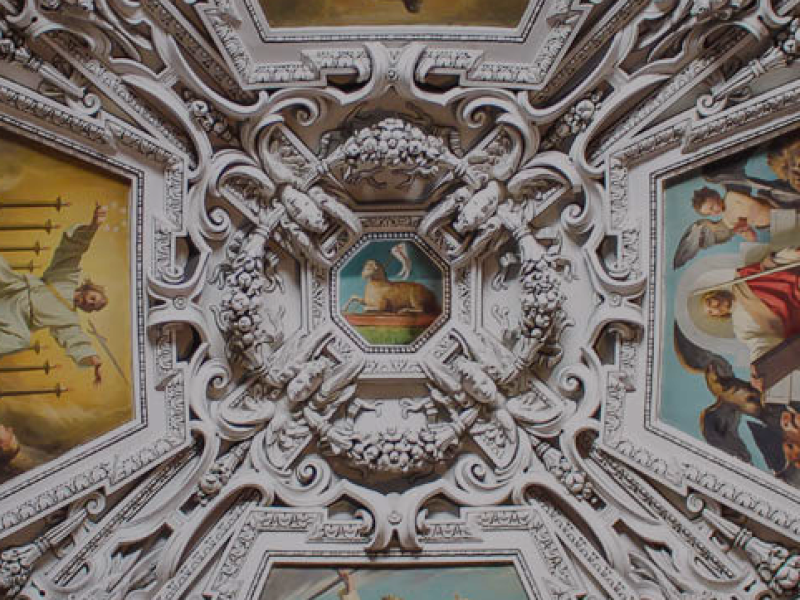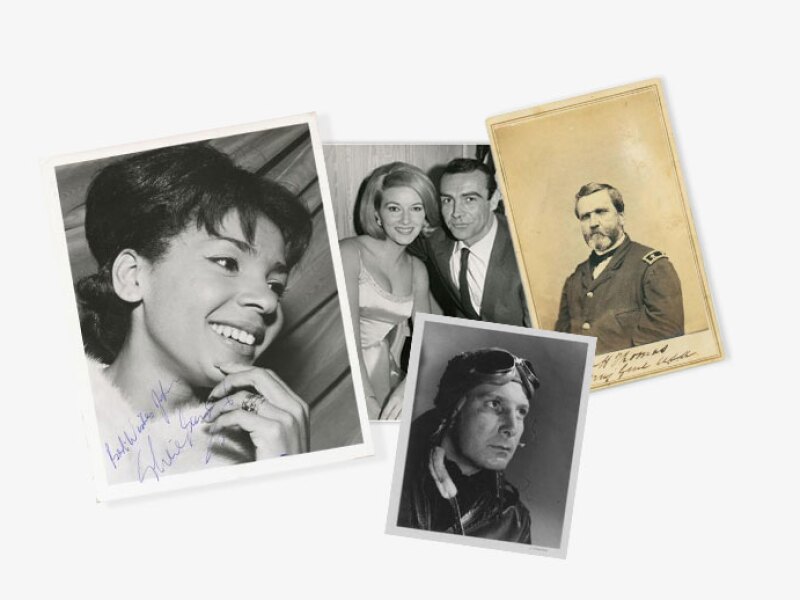The history of visual art is immense. Volumes of art history fill libraries around the world. People make it their life's purpose to study it, teach it, and learn from it. Sadly, most of us are not those people. We don't have years to dedicate to analyzing frescos and hieroglyphs, let alone time to read a book. But we're interested! Art is fascinating, and we want to learn! How did mankind go from creating art on limestone walls for the dead, to spray painting canvases that would later sell for millions of dollars? What does that evolution look like? Give us one minute, and we'll show you.
Ancient Art: From Egypt to Rome
The very first known appearances of art date back to the Prehistoric Age, but for the sake of this article, we're skipping over cave paintings and jumping right into Ancient Art, an era that begins in Egypt at roughly 3000BC and ends in Rome around 500AD.
What exactly is ancient Egyptian art? Generally speaking, it's art created by the Egyptian people in the lower Nile Valley between 3000BC and 30AD. While it includes everything from sculptures and jewelry to architecture, we'll focus on painting (because after all, this is just one article).
Paintings and wall arts were prominently created as gifts for the dead - they decorated tombs and temples to promise a pleasant afterlife. Rough stone walls were treated with mud plaster and whitewash. Paints were mineral based to maintain their pigment under long sun exposure. Resin was applied to protect and preserve paintings - some to this day.

Though the era spans thousands of years, Egyptian paintings share a distinctive style. Conventions within the civilization determined what and how figures and objects would be painted.
For example, hierarchical proportion demanded that figures were sized according to their importance, with royalty appearing the largest, and servants and animals appearing small. Even as kingdoms collapsed and new ones arose, Egyptian art remained relatively consistent until its end.
When we think of Greek and Roman Art, images of monumental coliseums and perfectly sculptured gods and goddesses come to mind, but ancient Greek art is also responsible for the birth of classical painting, though few, if any, paintings survived.
While Egyptian paintings lacked depth and perception, ancient Greek painting evolved to use layering techniques. For the first time, painting communicated emotions and character, and used influential techniques like shading and contour lines to introduce dimension.

By fourth century B.C., painting was a powerful medium and became recognized as a liberal art. Canvases moved from walls to portable wooden panels, and art was prominently displayed in public spaces. For the first time in history, a civilization wrote about its artists and their contributions to the field. The Romans continued to write about Greek art, and replications were abundant. More so than any other medium, it is difficult to distinguish between Greek and Roman paintings. Architectural, landscape, and narratives were prominent wall paintings under Roman rule.
The Middle Ages: From Early Christian and Byzantine to the Gothic Period
The Middle Ages began with the fall of the Roman Empire at a time of immense cultural development and migration. Art had one subject matter - faith in Christ.
As the Roman Empire dissolved and the Church rose to power, religious buildings were erected at an impressive rate. The large scale growth of Christian architecture created endless blank canvases in the form of walls and domed ceilings, and religious art moved from deep catacombs to places of prominence. Drawing inspiration from the Greeks and Romans who used small cubes of marble to pattern floors, the Early Christians decorated their churches with impressive wall mosaics made of colored, reflective glass.
As Christian buildings erupted with the spread of the Gospel, so did literature. Illuminated manuscripts were important cultural objects and, unlike the paintings and structures of the day, many still exist. Monasteries produced Bibles and other Christian literature to spread the word of the Gospel far and wide. The Gospel was meant to be treasured, so manuscripts were adorned with intricate artistic detail. Decorative pictures and abstract patterns appeared throughout within letters and on full pages. The Cross page from the Lindisfarne Gospels c. 700 A.D. is considered one of the most important works of art of its time, and maybe even ever.
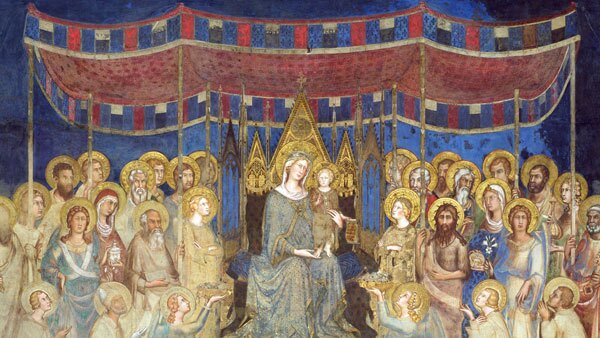
Gothic architecture surely overshadows Gothic fine arts, but elements of Gothic architecture eventually had their influence on painting. Gothic styles borrowed from Romanesque art with the emergence of magnificent hand-painted stained-glass windows in Cathedrals.
Paintings appeared as elaborate altarpieces depicting Christ, the Virgin Mary, and other Christian icons and figures. Similarly to the wood panels of ancient times, altarpieces were painted with tempera, an egg-based medium, on wood panels. As building slowed, emphasis returned to illuminated manuscripts. Once reserved for monasteries, manuscript printing became a common trade in the Gothic era as Christian literature dominated.
From Renaissance to Rococo
It's widely said that the Renaissance began when civilization realized it was no longer living in the Middle Ages. The Renaissance was the first period in history to recognize its own existence and to label itself. The Renaissance rejected the confines of the Middle Ages and longed to return to the classics and once again place emphasis on art, philosophy, and science outside of a religious framework. While striving to return to the ancient classics, Renaissance artists in fact fostered the beginning of a new age - a rebirth, and the beginning of modern civilization.
A young man named Masaccio can be credited as one of the first artists to make a mark on Renaissance painting. While his subject matter and canvases were not unique, his skill, combined with advances in materials, added new depth and detail to painting. The transition from tempera to oil paint was an important progression. While tempera was rigid and flat, oil allowed an artist to produce a wider scale of rich colors, to blend, shade, and alter his painting over time.

While Masaccio died very young, his work influenced his younger contemporaries and beyond, including da Vinci, Botticelli, Michelangelo, and Raphael who went on to be known as the masters of their age. Leonardo da Vinci combined innovative painting techniques with an interest and knowledge in anatomy and human emotion. The Mona Lisa remains one of the most analyzed works of art because of a subtle, mysterious smile.
The High Renaissance opened the door to other movements, like Mannerism, a niche style that appealed to a sophisticated taste with an emphasis on an aesthetic ideal. Baroque painting followed with a wide range of style characterized by its dramatic use of rich, deep tones and distinct use of light and shadows. If the Renaissance art meant to bring calm, Baroque meant to evoke strong emotions. Throughout Europe, subjects ranged from action to landscapes to portraits and still life scenes.
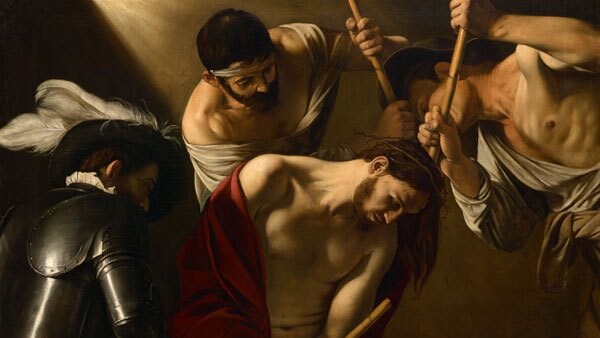
As Baroque was the end of Renaissance, Rococo was the end of Baroque. While Baroque paintings were dramatic and intense, Rococo was a decorative movement and its paintings were playful and even whimsical in comparison. Subjects were intimate scenes of frivolous outings and oftentimes featured impish cherubs. Portraiture was also prevalent in the Rococo period.
The Modern World: Neoclassicism to Symbolism
The 18th Century brought the Age of Enlightenment - traditional social, religious and political ideals were replaced with an emphasis on reason and rational thinking. Such radical change cultivated the arts like never before, as education and arts spread throughout a growing middle class. Several movements emerged, from Neoclassicism and Romanticism to Impressionism to Symbolism. Styles changed and evolved rapidly, especially when compared to the centuries long movements of Ancient Art.
Neoclassicism was decidedly anti-Rococo in its subject matter. While Rococo was for and about the elite upper-class, Neoclassical artists rejected the ornate style and returned to the classical styles of Greek and Rome. French artist Jean-Baptiste Greuze painted scenes from poor village life, while Jacques-Louis David, a master of the Neoclassic era and supporter of the French Revolution, painted scenes from the political world in which he was so active.

At the end of the 18th Century, the Romanticism movement emerged as an expression of emotionalism. As Enlightenment revolutionized against social order and religion, it also awoke a pursuit for emotional experiences. If Neoclassics believed in rational thought, then Romantics believed in the freedom to follow human desire. Artists were attracted to the uncontrollable wildness of nature, as is reflected in dramatic landscape paintings from artists like Joseph Mallord William Turner and John Constable. Others, like William Blake and Philipp Otto Runge, expressed emotion through epic, mystical scenes. As Romanticism celebrated individualism, painting styles varied immensely.
At the end of the French Revolution of 1848, the Romantic emphasis on feeling and imagination was viewed as an avoidance of reality. Realism, the desire to represent life truthfully and without fantasy and stylizing, emerged with Gustave Courbet leading the way.
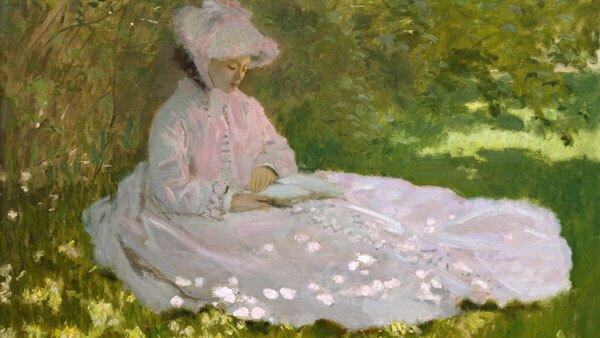
While Realists represented their subjects with precision and accuracy, Impressionists were free with their brushstrokes and moved their easels from the confines of their studios to the outdoors, where they could capture the reflection of natural light. The subjects were simple, too. Scenes of picnics, dancers, and cafes were common among the painters of the day - Édouard Manet, Claude Monet, Auguste Renoir, Paul Cézanne, and more. While Realists portrayed details, Impressionists portrayed essence of the subject with short, thick brush strokes. Other Impressionist techniques included painting on a light-colored background instead of a dark one, and mixing complementary colors to create dark tones instead of using black paint. New technology, like pre-mixed paint in tin tubes and synthetic pigments, gave artists the freedom to innovate.
By definition, symbolism is the practice of investing things with symbolic meaning, or expressing the invisible or intagible by means of visible or sensuous representations. The Symbolism movement emerged at the end of the 19th Century as artists used imagery to portray feelings of disillusionment rather than scenes or objects. Styles varied, as Symbolism was about the individual artist's state of mind. The Scream by Edvard Munch represents irrational fear, while Gustav Klimt's The Kiss represents desire.

20th Century Painting
The 19th Century paved the way for the liberty and freedom of expression seen in 20th Century Art. Expressionism, Abstraction, Cubism, Fantasy, Color Field Painting and Action Painting are just some of the movements artists experimented with and developed throughout the 1900s, and many movements emerged simultaneously. 20th Century painting is art like we've never seen it before.

Inspired by the bold and bright works of Van Gogh, Gaugin, and other emotive painters that came before them, The Fauves became one of the first painter groups of the new century. Led by Henri Matisse, The Fauves were at the foreground of Expressionism, a movement that, similarly to Symbolism, evoked feeling and ideas through radical imagery and colors. A subjective and individual movement, styles varied greatly between the Fauves and other Expressionist painters but all shared a common goal - to express the meaning of an emotional experience rather than portray a physical reality.
Directly or indirectly, this theme continues throughout the 20th Century in movements like Abstraction, Cubism, and Fantasy. Artists like Pablo Picasso and Marcel Duchamp used imagery in the form of shapes, forms, and colors to depict sexuality, nostalgia, imagination and more, while Jackson Pollock conveyed emotion through the physical act of abstract drip painting.

But not all 20th Century Art was abstract - in New York, the Ash Can School found inspiration from the everyday scenes of the city while elsewhere in America artists primarily painted landscape scenery. George Bellows was among the first 'modern Realists', making a mark with his dramatic paintings of boxing matches. Years later, Edward Hopper would come to fame for similar reasons - his paintings of mundane scenes of American life that no one deemed worthy of painting were in fact poetic. American Gothic, Grant Wood's realist painting of a farmer and his wife, pitchfork in hand, became an icon of 20th Century American art.
One can't talk about 20th Century Art without the mention of Pop Art. A reaction to mass and popular culture and consumerism after WWII, Pop Art was an artistic representation of meaningless objects or popular icons such as product labels, celebrities, and even the American flag. While artists from Britain to the USA produced what could be defined as Pop Art, Andy Warhol is the most iconic of them all. While you may not know the name, you've surely seen replications of his trademark silkscreen art.
The Minimalist art movement developed in the mid-century, arguably in defiance of Abstract Expressionism's more explosive approach to art. Paintings were simple and often consisted of mere geometric shapes, repetitious patterns, and monochrome colors. Specific minimalist movements emerged, like Color Field Painting and Shaped Canvas. Mark Rothko, Frank Stella, and Helen Frankenthaler were icons of minimalist painting.

A direct defiance of conceptual art, Neo-Expressionism developed in the '70s and through the '80s as a modernized return to Abstract Expressionism. In many ways, it was a return to The Fauves of the early century with its vivid colors and chaotic brush strokes. One Neo-Expressionist painter in particular started as a graffiti artist on the streets of New York and would later go on to befriend Andy Warhol and have his works shown at international galleries. His name was Jean-Michel Basquiat and his painting of a skull (Untitled) sold posthumously at auction $110.5 million in May 2017.


